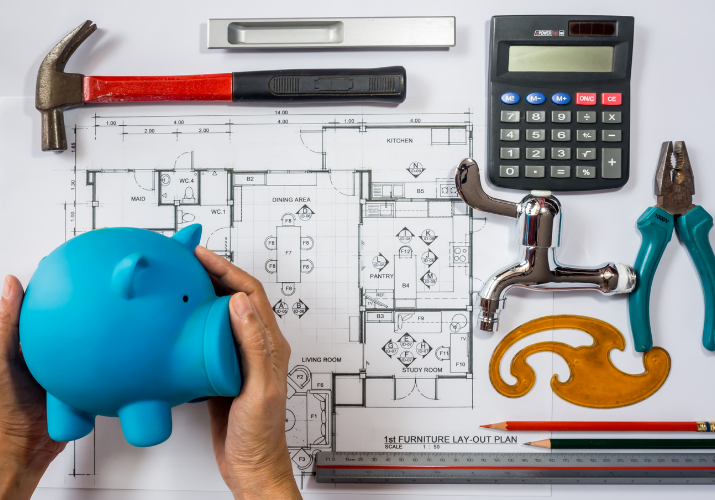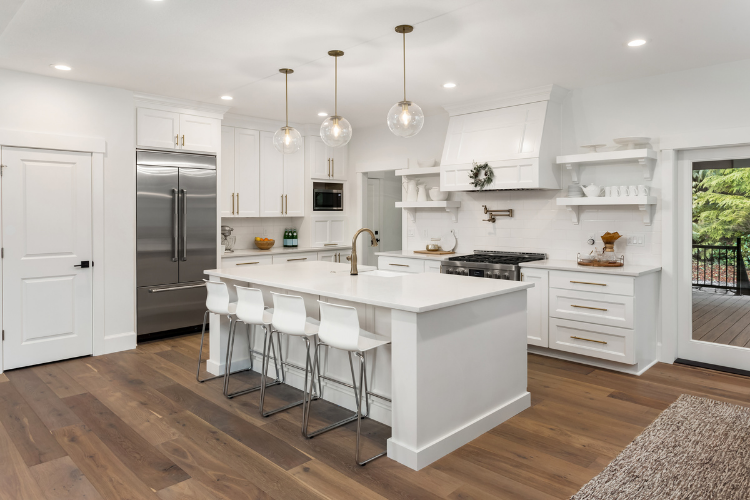Planning A Home Improvement Project

Homeowners want to improve their existing homes to save money, but it’s important to think through those improvements carefully to obtain the best value.
Let us help you start right so you can get the work done you need at a fair price.
“Can you give me an estimate?”
When thinking about undertaking a home improvement project, the first thing most people would do is call a local contractor. He’ll come out to the house, take some rudimentary measurements, maybe a photo or two, and after some head-scratching about what needs to be done, he’ll promise to get back to the homeowner.
A couple of days or weeks later, he might get back with a price and maybe a basic description of the project. It reads, “To build an addition – $125,000.” Please sign here.
The homeowner might then call another builder for a second opinion. A few more measurements get jotted down, a couple more photos. Maybe this one takes the time to sketch some preliminary floor plans. “Don’t worry about that roofline; we can make it work.”
Then there’s another proposal, maybe a little more detailed, including more of a breakdown of what he plans to build. The price this time is $115,000.
On the surface, it might be a good deal. But does one really know what either of them was pricing? The first contractor might be thinking about an entirely different approach to the project than the second.
He might be thinking about better materials, more durable construction techniques, or redoing the entire roof so the addition blends in better. It’s like we might be comparing mangoes and rutabagas.
After all this, the homeowner is still no closer to sitting in that new sunroom or enjoying that new master suite. The problem: he is not in control of the process. He started in the middle instead of at the beginning when planning out his project.
Planning should be the first step.
The first step should be putting together a plan, clarifying what the family wants to gain from the project, then creating a package that can be bid out on a level playing field. Many people take the bull by the horns and start drawing up floor plans themselves.
This can be very helpful because no one knows how you live or what you want to improve in your home better than you do. But graph paper and a scale ruler can be dangerous weapons if placed in the wrong hands.
There are several options. You could contact an architect. A fairly basic addition, such as a new bedroom wing, or an extra room over the garage, may be of little interest to a full-service architect. If they do get involved, the project budget could be exceeded by design fees, as most set their rate as a percentage of the total project.
The homeowner could approach a builder who offers design service in-house. But once the plans are in place, the opportunity to send them out for competitive bidding is lost. There might be a good set of drawings, but how can the owner be sure he’s getting a good price to build them?
Or, he can contact a professional residential designer. In most parts of the country, residential architecture can be done by a designer that doesn’t have to be a registered architect.
This includes everything from basic additions and renovations all the way up to custom homes of several thousand square feet. There are many advantages to using a professional residential designer, particularly one with a strong background in construction.
A good designer will save money.
Compared to a full-service architect’s fees, a residential designer can perform the design and execute the working drawings for less than half the cost. This can also save time. Rather than spinning wheels for months waiting for a builder’s quote, the homeowner can take that time to work with the designer to sharpen his ideas. He’ll know exactly how he wants his improvements to fit his house, as well as his family’s lifestyle.
With the advent of Computer Assisted Design and highly advanced programs that specialize in residential design, the homeowner will be able to virtually live in the new plans, seeing them from every angle, from inside and out. Seeing the 3-D images of every part of the project also helps eliminate problems in the field once construction begins.
By the time the builder gets involved, all the major decisions are made. All the builders are now bidding on the project based on the designs provided. By the end of the project, the money invested in the design should come back to the owner in the form of savings throughout the project.
Help Protect Your Investment With A Home Warranty!
Your home is often one of the most significant investments one will ever make in their entire lifetime.
A HomeMemership home warranty plan will help you avoid costly repairs if a home appliance breaks or major system stops working. You would have an easy way to submit a claim and one of our specialized, pre-vetted professionals will be on their way to repair or replace your covered item.
Our membership also includes Members-Only Discounts towards home services, retail shops and more. From lawn care to interior decorators and carpet cleaners, our warranty offers immediate benefits that go beyond standard long-term protection.
Your membership gets you discounts from local businesses on services for your home so you can save money now and later.









